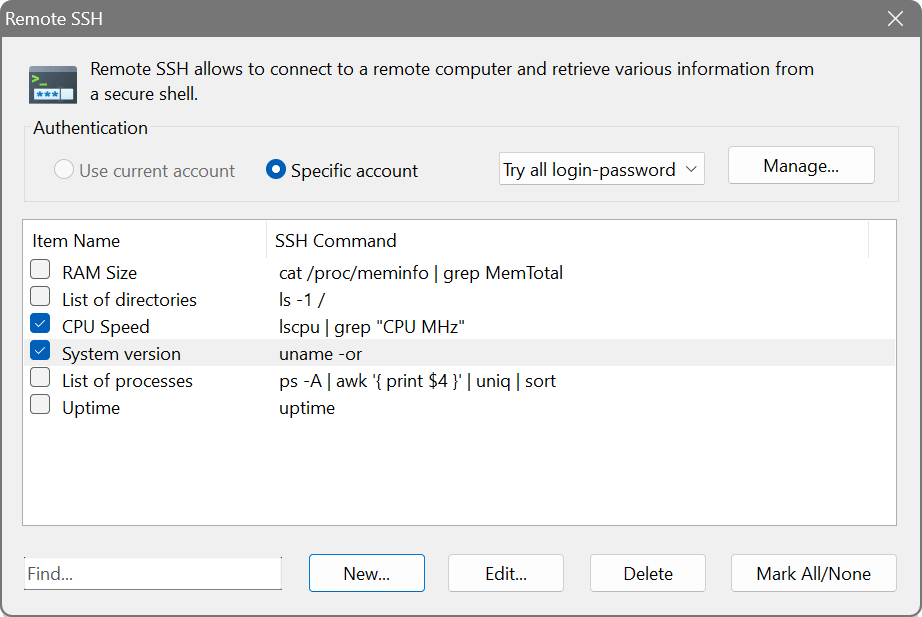
- Remote ssh anywhere install#
- Remote ssh anywhere software#
- Remote ssh anywhere password#
- Remote ssh anywhere plus#
Method 1: Remotely access the Raspberry Pi through VNC. Check out this quick primer to the Linux command line, as well as these three sites to help you evolve into a Linux command line master. Through VNC Through SSH Through Xrdp Through Teamviewer Through NoMachine. If you're running a web server, you may wish to backup your website using the SSH command line. I've also used SSH to access log files and run benchmarks to test CPU performance. For example, ssh piraspberrypi.local or ssh pi192.168.1.151.
Remote ssh anywhere software#
As I run a headless dedicated Plex server, most of what I use SSH and SFTP for is file transfers with occasional software updates. On a Linux PC (or even another Raspberry Pi), open a Terminal window by pressing Ctrl + Alt + T, then enter either of the following commands to connect to Raspberry Pi via SSH: Replace username and hostname or IP address with your own Pi’s details. Because passwords and usernames can be brute-forced, it's recommended to use SSH keys.
Remote ssh anywhere password#
You can connect using a password or a private and public key pair. These USB hubs provide secure, robust connectivity between peripheral devices and a PC without the physical proximity constraints typically associated with USB devices. To initiate an SSH connection to a remote system, you need the Internet Protocol (IP) address or hostname of the remote server and a valid username.
Remote ssh anywhere plus#
What you do likely depends on the server and what it's used for. Digi AnywhereUSB® Plus brings secure, flexible and scalable USB 3.1 multiport connectivity for USB devices connected from remote or virtualized hosts.
Remote ssh anywhere install#
Similarly, to say create a WordPress server, you would just follow the install details but via a SSH command line. When I installed Plex on my headless TS140 via SSH for example, I merely entered: sudo apt-get install plexmedia server -y Installing software merely means plugging in the proper command. For example, you can copy files with the following commands: scp : scp : Some common tasks you may preform are software installs, updates, reboots, copy files, and even run GUI applications. So, what can you actually do? Anything that's possible with the Linux command line. Okay, great! SSH is configured both on the server and the device you'll use to manage your server. I've even had it run through Tor, but it is very slow.How You Can Manage a Remote Linux Server With SSH

In the past I've done things like that and redirecting SSH connections through SOCKS proxy servers. It is possible to include advanced configuration options through the SSH configuration file, such as port tunneling and websocket connections. Once this is configured, in conjunction with the port forwarding you will be able to use "ssh serverint" to connect to your server when you're at home and "ssh serverext" to connect to it when you're somewhere else. I would like to set this server up to be accessible from outside of the local network. At the moment I access the computer using: ssh .X.

I am new to this concept and a little unsure as to what to do.

If you use a non-standard port for the external SSH connections then change the port field for serverext to match that.Ĭhange the Hostname for the serverint config to the internal IP address for that server on your network. 14 I am trying to set up a local server to be accessible from outside of the local network. Add something like this: Host serverextĬhange the Hostname for the serverext config to the IP address of your Internet connection. I also recommend using the SSH config file (~/.ssh/config) to make it easier when making either an internal or external connection. For the webserver you will need to set the port forwarding from port 80 on the external interface to your server and maybe port 443 if you want to include SSL/TLS connections. You can either use the standard port (22) or any alternative port (something above 1024). The remote server must be accessible through that IP. You will require an IP address of the server. The timeout external to your home network occurs because the IP you specified will be routed elsewhere on external networks.Īs others have indicated, you need to configure port forwarding on your router (external interface) to the SSH server. Prerequisites Following are some prerequisites: The remote server must be powered on and have a stable network connection.


 0 kommentar(er)
0 kommentar(er)
